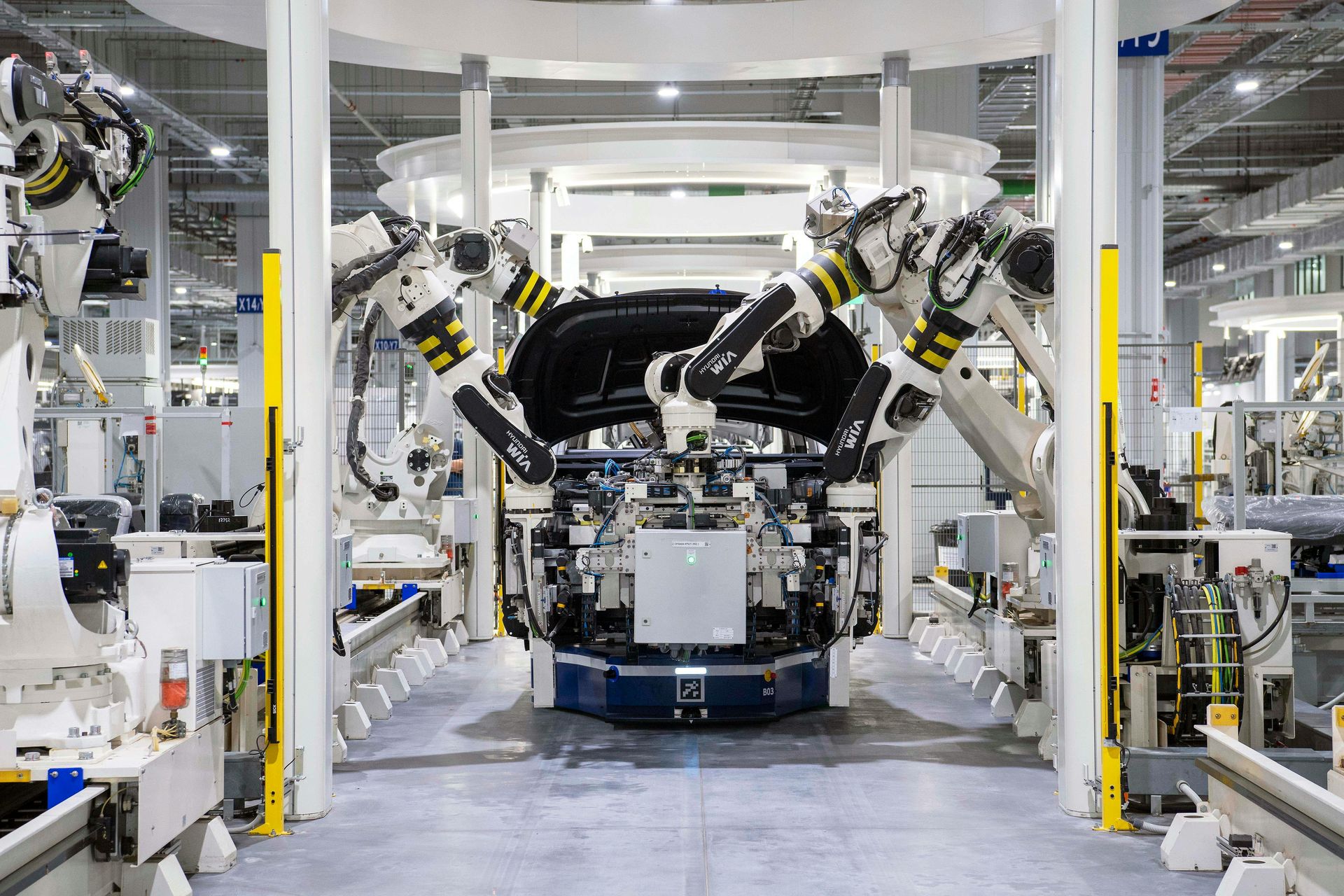The manufacturing industry plays a critical role in global manufacturing and trade, relying heavily on an efficient and resilient supply chain. By 2025, companies that successfully streamline their supply chain operations will stand out in an increasingly competitive market. Events such as geopolitical shifts, raw material shortages, and unexpected disruptions have made it clear that supply chain optimization is no longer optional, it is a strategic priority.
In this article, we present five keys to elevate your supply chain performance in 2025. Each section highlights practical methods to boost efficiency, reduce costs, and foster innovation. Whether you operate in electronics, automotive, consumer goods, or any other manufacturing sector, these insights will help you future proof your operations.
1. Leverage Technology and Artificial Intelligence
Technological advancements, especially in Artificial Intelligence (AI), have revolutionized supply chain management. In the manufacturing industry, AI is being used to analyze massive data sets, detect patterns, and automate decisions at a speed and accuracy that humans alone cannot match.
Key Applications
- Demand Forecasting
Machine learning algorithms comb through historical sales data, seasonal trends, and market indicators to predict future demand with greater precision. This proactive approach reduces overstock and out of stock situations, optimizing your inventory levels.
- Routing and Transportation Optimization
AI powered route planning tools evaluate variables like traffic, fuel costs, and delivery windows in real time. By choosing the most efficient routes, you lower shipping expenses and improve customer satisfaction with timely deliveries.
- Predictive Maintenance
Internet of Things (IoT) sensors installed on critical machinery provide continuous data. AI then analyzes performance metrics to detect early signs of malfunction. Scheduling maintenance before breakdowns occur not only prevents production downtime but also extends the lifespan of your equipment.
Beyond these areas, technology and AI can optimize operations across forecasting, scheduling, and even quality control. By integrating advanced software solutions, manufacturing companies gain real time visibility into supply chain activities, ensuring fast and accurate decision making. Embracing these tools helps you adapt to fluctuations in demand and remain agile as market conditions evolve.

2. Embrace Digitalization and Automation
In the path toward full supply chain optimization, digitalization and automation are cornerstones. The convergence of Enterprise Resource Planning (ERP) systems, Supply Chain Management (SCM) platforms, and robotics is transforming how the manufacturing industry handles its end-to-end operations.
Digitalization Strategies
- Real Time Tracking
Implement RFID tags, QR codes, or other tracking technologies to gain instant oversight of inventory movement. This level of transparency reduces errors, enhances security, and supports proactive decision making.
- Paperless Operations
Transition to electronic documents to streamline purchasing, invoicing, and order processing. Eliminating manual paperwork cuts lead times and human error, creating a more efficient workflow.
- Centralized Data Integration
A robust SCM platform that consolidates data across procurement, production, distribution, and sales allows stakeholders to quickly access accurate information. This transparency aids in optimizing scheduling, warehousing, and shipment planning.
Automation Solutions
- Automated Storage and Retrieval Systems (AS/RS)
These systems expedite picking and stocking processes, boosting productivity and minimizing mistakes.
- Robotic Process Automation (RPA)
RPA software handles repetitive, rules-based tasks, such as invoice data entry and report generation, freeing employees to focus on higher value activities.
- Collaborative Robots (Cobots)
In production lines, cobots work alongside human operators to improve efficiency and safety without entirely replacing human labor.
When processes are digitized and repetitive tasks are automated, supply chain operations become more agile, less prone to error, and better equipped to handle market changes. This strategic modernization not only decreases operational costs but also enables faster response times to customer demands.

3. Incorporate Sustainability and Eco Efficient Practices
Sustainability has evolved into a core aspect of competitive differentiation, particularly in global manufacturing. Governments and consumers alike are pushing for green policies and transparent corporate responsibility. By 2025, the manufacturing industry will need to adopt eco efficient measures to stay ahead and remain compliant with emerging regulations.
Sustainability Initiatives
- Green Logistics
Optimize transportation routes, consolidate shipments, and collaborate with carriers focusing on reduced fuel consumption and lower emissions. In some cases, adopting electric or hybrid vehicles for local deliveries can also lower carbon footprints.
- Energy Efficiency in Facilities
Use intelligent lighting systems, advanced HVAC controls, and renewable energy sources such as solar panels. These measures cut energy expenses and reduce greenhouse gas emissions.
- Waste Reduction and Recycling
Implement robust recycling programs, reduce packaging materials, and reuse by products when feasible. These steps minimize landfill contributions and can even turn waste into revenue generating materials if managed effectively.
A sustainable supply chain underscores operational excellence. A reduction in energy and raw material usage tends to lower costs in the long term. Moreover, eco conscious practices enhance brand reputation and can become a strong selling point for potential clients who prioritize environmental stewardship.

4. Strengthen Supplier Management and Strategic Relationships
No supply chain is stronger than its weakest link, making supplier management a critical aspect of success in the manufacturing industry. A well-established relationship with suppliers ensures timely deliveries of raw materials, consistent product quality, and the flexibility to scale up or down as demands shift.
Best Practices in Supplier Relationship Management (SRM)
- Continuous Collaboration
Share real time forecasts and production plans with suppliers to align inventory and production capacity. Regular communication fosters trust and eliminates last minute surprises.
- Risk Diversification
Relying on a single source for key materials is risky. Consider diversifying your supplier base across different regions or establishing multiple backup options. This step mitigates supply disruptions caused by unforeseen events.
- Long Term Alliances
Negotiating multi-year contracts can stabilize pricing and secure priority in deliveries. Such alliances often open doors for joint product development or co innovation opportunities.
- Supplier Development
Offer training and resources to help suppliers enhance their processes, quality control, and sustainability practices. By investing in their growth, you indirectly strengthen your entire supply chain.
Building strategic partnerships with suppliers leads to mutual benefits. In crisis situations, collaborative suppliers can expedite shipments, provide updated information, and help manage risk more effectively. It is not just about cost negotiations, it is about forging relationships that can withstand market volatility.

5. Focus on Cost Reduction and Logistics Excellence
A robust supply chain aims to balance cost reduction with optimal service levels. In the manufacturing industry, companies face constant pressure to maintain competitive pricing while delivering top quality goods on tight schedules.
Strategies for Cost Reduction and Logistics Excellence
- Lean and Kaizen Methodologies
Map your logistics processes to identify nonvalue added steps. Small, incremental changes practiced regularly can lead to significant savings.
- Smart Inventory Management
Use real time data and accurate forecasts to maintain just enough inventory. Excess stock ties up capital and storage costs, while insufficient stock leads to production delays. Striking the right balance is key.
- Transportation Management Systems (TMS)
By analyzing routes, vehicle loads, and delivery windows, TMS platforms optimize fleet usage, reduce fuel expenditure, and cut down on transit times.
- Workforce Training
Well trained staff can handle equipment efficiently and identify ways to streamline operations. Encourage employees to propose improvements, contributing to a culture of continuous optimization.
Through disciplined monitoring of performance metrics such as order fulfillment rates, warehouse turnaround times, and transportation costs, you can spot inefficiencies and implement targeted improvements. This data driven approach not only lowers operating expenses but also boosts overall customer satisfaction.

In addition to refining internal processes, having trusted suppliers is vital for manufacturing businesses. Brexia stands out as a reliable provider of industrial products, offering a broad range of solutions in adhesives and sealants, cable and wire, electrical and electronic components, material handling equipment, safety products, packaging solutions, and tools. By partnering with Brexia, you can source high quality materials and benefit from personalized service that ensures timely deliveries. This seamless access to essential products helps reinforce the continuity and efficiency of your supply chain.